Great Destinations: Bordeaux Wine Country
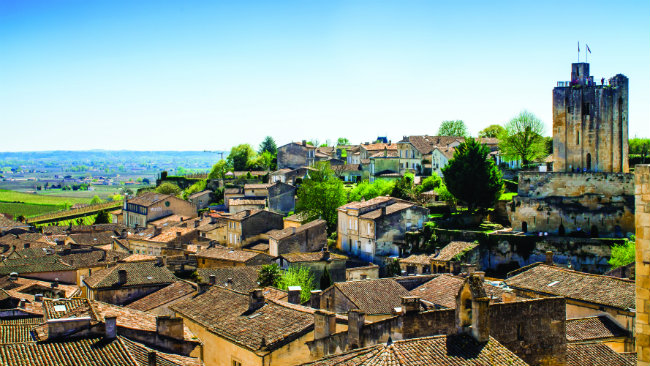

With the wonderful new Cité du Vin to lead the way, there’s a new sense of fun and openness about the Bordeaux wine region. The châteaux doors are opening to the public, the terroirs and appellations are being demystified and there are plenty of exciting new ways for beginners and enthusiasts alike to discover the joy of wine and the pleasures of the country vineyards. Guy Hibbert discovers that there’s never been a better time to visit the home of some of the world’s most legendary wines.
Bordeaux’s wine heritage is many centuries old and its extraordinary history and the diversity of its terroirs make for a formidable reputation. While wine buffs and experts have long enjoyed the complexities and nuances of the hundreds of great wines produced here, for the beginner lacking in wine knowledge this aura and mystique was something of a barrier to the discovery of the region. In recent years however, alongside the rebirth and re-development of the city, there has emerged a new and more inclusive approach to wine tourism.
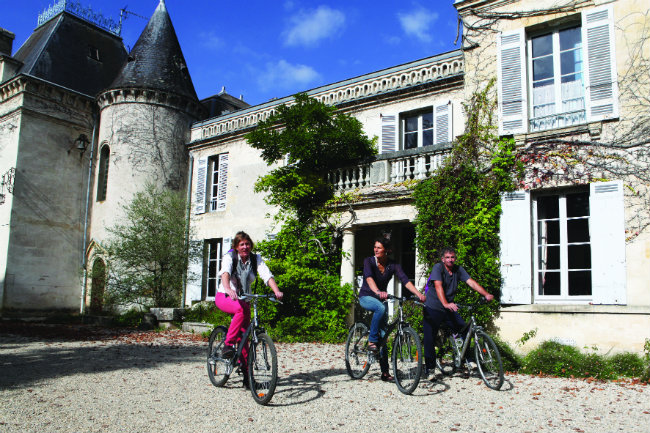
Bike touring around the vineyards at Château Bardins. Photo: OT Bordeaux
Vines have been cultivated in Bordeaux since Roman times, two thousand years ago. Following the marriage of Henry Plantagenet to Eleanor of Aquitaine, the entire region fell into British hands and, with Bordeaux’s busy ports able to send ships to the coast of England, especially to London, the wine trade with Britain began to develop strongly. (The legendary British appetite for claret started long, long ago.)
Most of the wine produced in those days came from the Graves area, but later on the Dutch, experts at draining fen and marshland, developed the Médoc region along the Gironde estuary, and new vineyards sprang up. In the late 18th century, Bordeaux’s fame spread to the New World with the visit of George Washington to Château d’Yquem and other vineyards. So great was the appeal and demand for the finest wines that in 1855 the now legendary classification system came into being in order to give some sense of rank to the best of the châteaux-produced wines.
In recent times, the output of the most famous châteaux has become prized by investors and collectors, with some wines achieving the stellar prices and intense desirability previously afforded only to fine art and antiques. Great wines have become famous brands, attracting the attentions of wealthy investors, celebrities and speculators, with entire estates now being acquired by Chinese buyers.
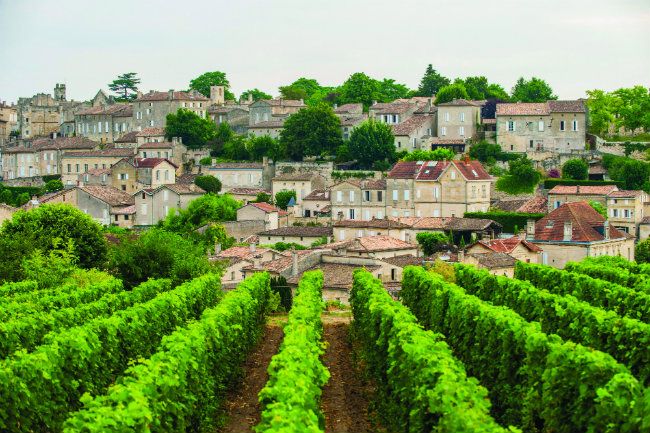
St Emilion. Photo: Vincent Bengold/ OT Bordeaux
International Demand
With such a rich and proud history and such phenomenal international demand for the best-quality wines it is not surprising that a perception of elitism and snobbery should develop around the aura and prestige of the great wines. But while this is not such a problem for connoisseurs and insiders, it is a turn-off for the average buyer who enjoys a visit to a domaine and a good glass of Bordeaux but who can’t afford the prices for the finer wines and hasn’t the time to figure out what else to buy. According to Wine Cellar Insider, over 70 per cent of Bordeaux wine sells for between €3 and €15 per bottle. So there is plenty of reasonably-priced wine on offer, if you know where to look, but with 60 appellations and more than 7,300 châteaux wineries in the Bordeaux region, where do you even begin?
Then there is the sheer diversity of terroirs and micro-regions, which produce very distinctive and unique red, white and rosé wines. Once you begin to appreciate these regions, such as the Médoc, the Haut Médoc, the Graves, and the famous communes such as Margaux, Saint-Estèphe and Pauillac, you begin to realise that it is impossible to talk about ‘a glass of Bordeaux’. Further afield and you have Blaye, Bourg and Saint-Émilion, each with its own claim to fame.
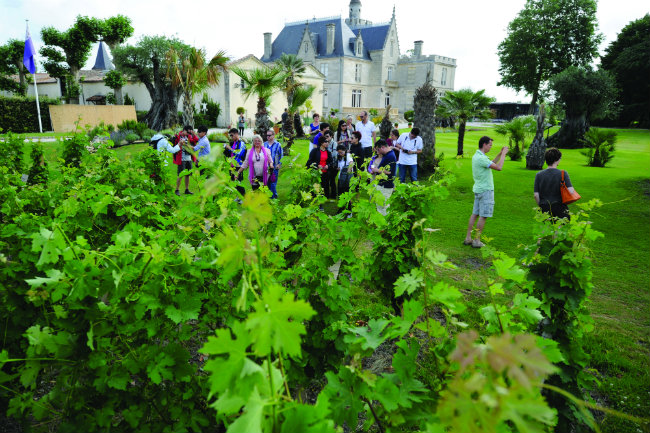
Visitors to vineyards these days want not just a tasting and a quick tour but a true sense of place. Photo: OT Bordeaux/ Gilles Arroyo
Of course, the best way to find out more is to visit the area – and, thanks to a wide-ranging programme of improvements and innovations, now is a great time to go. Recognising that the air of exclusivity surrounding the most famous so-called ‘first-growth’ châteaux (less than five per cent of the entire Bordeaux output comes from classified domains) is somewhat off-putting for the average visitor, the people behind wine tourism in Bordeaux have been working hard in the past few years to open wide the doors of the city and of hundreds of châteaux to offer a more accessible experience: to be more inclusive of the everyday tourist and to offer fun experiences around wine.
According to Sophie Gaillard-Mairal, head of Bordeaux Wine Tourism, “Of course, we have old houses, old families, a long history and a long tradition, but Bordeaux winegrowers are now very enthusiastic about wine tourism and are excited about welcoming all types of visitors – beginners and enthusiasts, not just wine connoisseurs.”
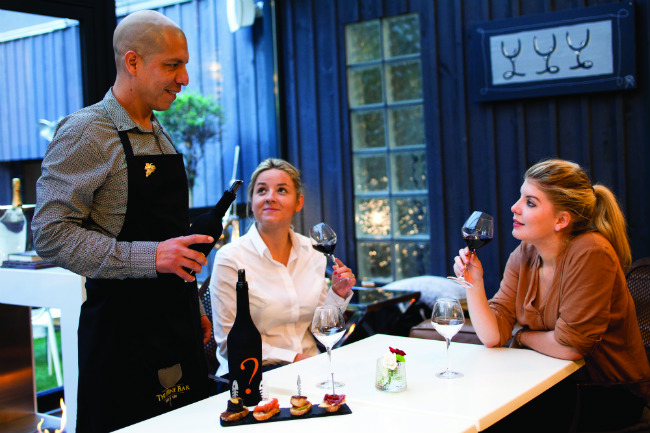
blind-tasting at a Saint-Émilion wine bar. Photo: OT Bordeaux
Time was, you could find yourself driving randomly from one modest château dégustation to another, trying to convince yourself that perhaps you might stumble upon a cracking little hidden gem of a wine. But it was a one-dimensional experience; as most people don’t have the skills to taste wine at a professional level, the whole performance is a kind of charade where visitors feel obliged to comment positively on yet another mouthful of tannins and to buy a bottle or a case just because they are there. And these were just the domains that sold some stock directly to the public. For many growers the traditional route to market was through the négociants, so there was no experience of contact with the end consumer.
What is now recognised is that visitors are looking for an overall experience, something memorable to take back with them after their trip. A visit to a château: yes, a dégustation, but how will I remember this place, this wine, when I am back in Sacramento, Sydney or Southampton, enjoying a bottle with friends?
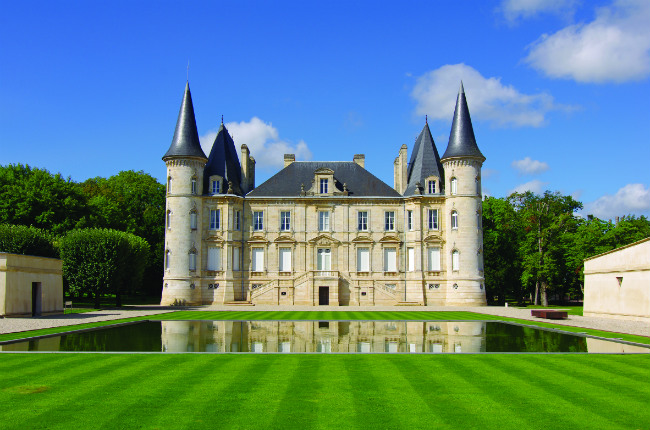
The sheer beauty of the châteaux makes the tourist board’s job so much easier. Photo: Fotolia
A Story to Take Away
Now things are really changing. Producers that are more willing to open their gates to the public and sell some wine directly are noticing what visitors really enjoy: the history of the winery, the family behind it, the architecture and ambience of the buildings, the opportunity to look around the vineyard, to have a new experience. Of course, there’s always the technical aspect of vinification to show off, but once you’ve seen ranks of gleaming steel tanks and cellars of oak barrels what is there to distinguish one domain from another?
Increasingly visitors want a story to take away, something to add another dimension to their pleasure of drinking a glass when they get home. So now the wineries are putting on their creative hats and coming up with lots of new offerings.
Confused by wine jargon and all those herby descriptions? A visit to Château de Reignac plunges you right into their very own award-winning scent garden for an olfactory education to awaken your senses before your wine tasting is conducted in the 16th-century pigeonniere. (The scent garden is open from June to September.)
Over at Château d’Agassac they have embraced new technology and created a family-friendly wine tour where, iPad in hand, you take the ‘Vin-Teractif’ tour of the domain while the kids are playing princes and princesses amongst the ancient turrets of the château. The château also offers visits around a theme, such as the popular ‘Chocolate is King’, an innovative pairing of three grand cru chocolates from the renowned Bordelaise chocolate-maker Maison Saunion with three vintages of Château d’Agassac.
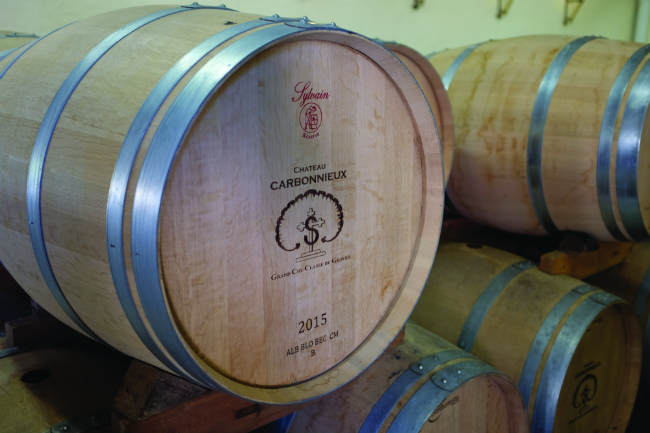
Oak barrel at Château Carbonnieux. Photo: Guy Hibbert
As I meandered around the gardens and caves of Château Carbonnieux and watched the newly-picked grapes coming off the trailers for the 2016 harvest, the co-owner, Eric Perrin, told me how his visitors enjoy not only the dégustation but the overall ambience of the historic buildings and park, which includes the gardens where Thomas Jefferson planted a pecan tree during his visit in 1787. A collection of vintage cars is an inspiring starter for the main event: a tasting of their renowned white wine.
Sometimes it’s the pleasure and the pride demonstrated in the making of wine that creates a memory. I drove through the villages and endless vineyards of the Haut Médoc to where Julien Meyre at Château Cap Léon Veyrin was preparing his cave for the arrival of the first grapes of his vendange. He explained how he is the sixth generation of his family to make wine. It’s a true family business: everyone is involved and the enthusiasm and ambition is obvious, not just in their excellent Cru Bourgeois wines but in their pleasure at meeting their customers face to face – so much so that they were one of the first to offer on-site chambres d’hôtes.
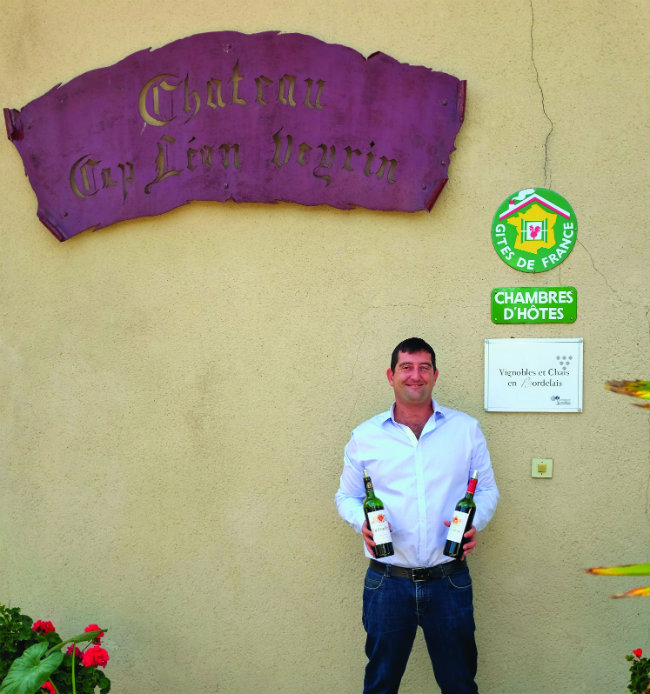
Julien Meyre at Château Cap Léon Veyrin is a sixth-generation wine-maker and was one of the first to offer chambres d’hôtes. Photo: Guy Hibbert
At the other end of the scale, some of the more ambitious domains seek to invest in different ways, for example with new technologies and state-of-the-art architecture adding value to their brands. The striking Philippe Starck-designed cellar at Château Les Carmes Haut-Brion is one such recent example, while over at Château Haut Bailly in Pessac-Léognan they are celebrating their appointment as the first wine producer to be afforded the prestigious Entreprise du Patrimoine Vivant status, a recognition of savoir-faire, respect of tradition and craftsmanship. Back in the Médoc, during the last decade Jean-Michel Cazes has sympathetically created what he calls “Base camp for the Médoc”, a quintessential French village in the heart of grand cru wine country with locals and visitors enjoying the ambience en route to the attractions of the award-winning Château Lynch-Bages, the commune of Pauillac and the Michelin-starred Cordeillan-Bages hotel and restaurant. Bernard Magrez, owner of many classified domains, has developed a strong reputation in luxury wine tourism, enhanced in recent years with the opening of La Grande Maison restaurant, where Pierre Gagnaire is head chef (when the restaurant first opened, it was under the helm of Joël Robuchon). In fact, if you want to experience a night or two out amongst the vineyards, today you’re spoilt for choice. The options range from a modest chambre d’hôte to five-star deluxe.
Whereas once the experience of wine tourism was limited to tastings, now you can discover the châteaux and the countryside in a variety of ways, from self-guided or organised tours which include cycling, boating, making wine, picnicking, with food and wine pairings.
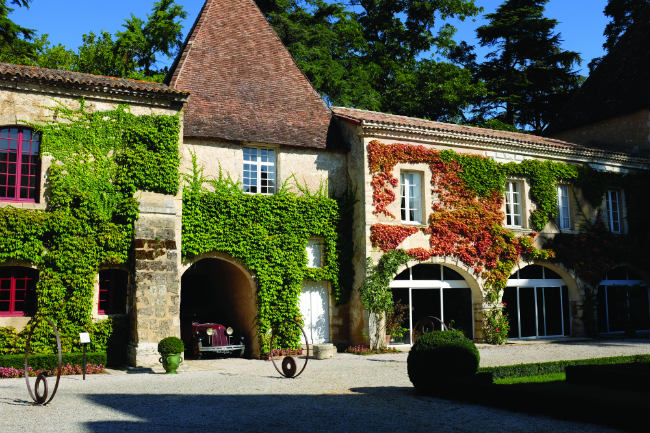
Château Carbonnieux, where Thomas Jefferson planted a pecan tree. Photo: Guy Hibbert
Equally exciting is the way in which wine tourism is now becoming integrated with the city of Bordeaux itself. As we featured in our last issue, Bordeaux has witnessed something of a rebirth in the last decade, and the entrepreneurial spirit driving this renaissance has not missed the opportunity to capitalise on its wine connections. Now you can take an Urban Wine Trail in the city, starting at the stylish Bar à Vin CIVB right opposite the wine school before stopping at some other great wine bars such as Chez Pompon – or, if you want to indulge in some serious food and wine pairings, take my tip and visit Garopapilles or Miles.
If you are trying to make sense of the terrors around Bordeaux, go to Bordeaux Tourism’s website at www.bordeauxwinetrip.com where, among other helpful themes and tools, they have organised this complex region into easy-to-follow ‘wine routes’: Blaye & Bourg, Médoc, Entre-deux-Mers, Saint-Émilion-Pomerol-Fronsac, Graves & Sauternes and Bordeaux.
Last, but certainly not least, as we described in the last issue, Bordeaux now has a shiny new landmark for wine tourism with which to beckon visitors. The sensational new Cité du Vin, an architectural fantasy filled with wonders and revelations celebrating the global heritage and infinite pleasures of wine, opened in 2016 and is expected to receive close to half a million visitors in the first year.
Not surprisingly, Bordeaux Metropole Tourist Office and their partner Gironde Tourism have chosen to open their dedicated Wine Tourism information centre on the ground floor of the Cité, so you can get advice, book your tours and even depart on river tours direct from the nearby quayside.
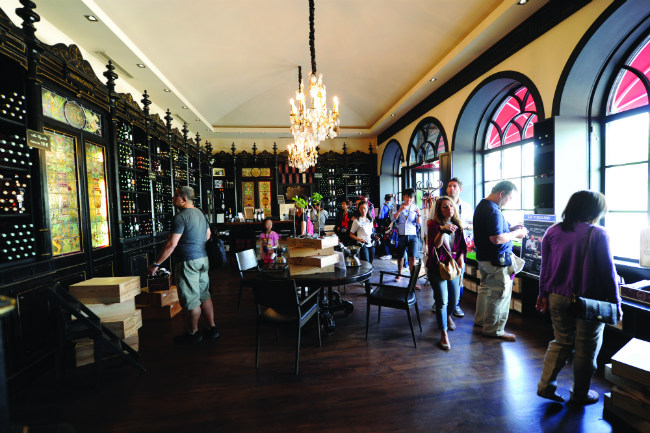
Wine shop at Château Pape Clément. Photo: Gilles Arroyo
Beginner’s tips for visiting Bordeaux’s best châteaux
Plan ahead. Distances are often greater than you might think.
Reserve. Book your visit well ahead and be there on time.
Weekdays are best. A lot of châteaux are closed on Sundays.
Spring and autumn are pleasant and quieter (avoid primeurs week in April and harvest time, September/October).
Spend an hour at a wine school or with an expert to learn how to taste.
Take your time. Three appointments per day can work, four at a stretch.
Visit the châteaux whose wines you may already know and like.
Many of the top-listed châteaux are not open to the public, so consider hiring a wine tour guide to gain access.
Bring a jacket, it can be cool in the cellars.
Expect to pay a modest fee for your tour and tasting at the best châteaux.
The driver must never drink.
From France Today magazine
Related Articles: Where to Stay and Eat in Bordeaux Wine Country
12 Unmissable Wine Destinations in the Bordeaux Region
Things to See and Do in Bordeaux: A Comprehensive Guide
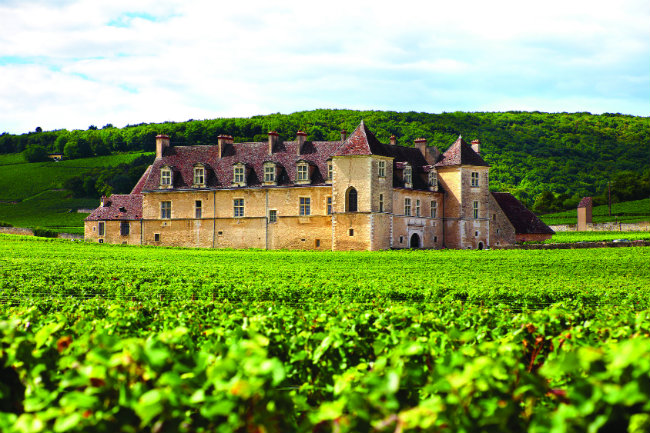
Beautiful Bordeaux vineyards. Photo: Fotolia
Share to: Facebook Twitter LinkedIn Email
By Guy Hibbert
Leave a reply
Your email address will not be published. Required fields are marked *



